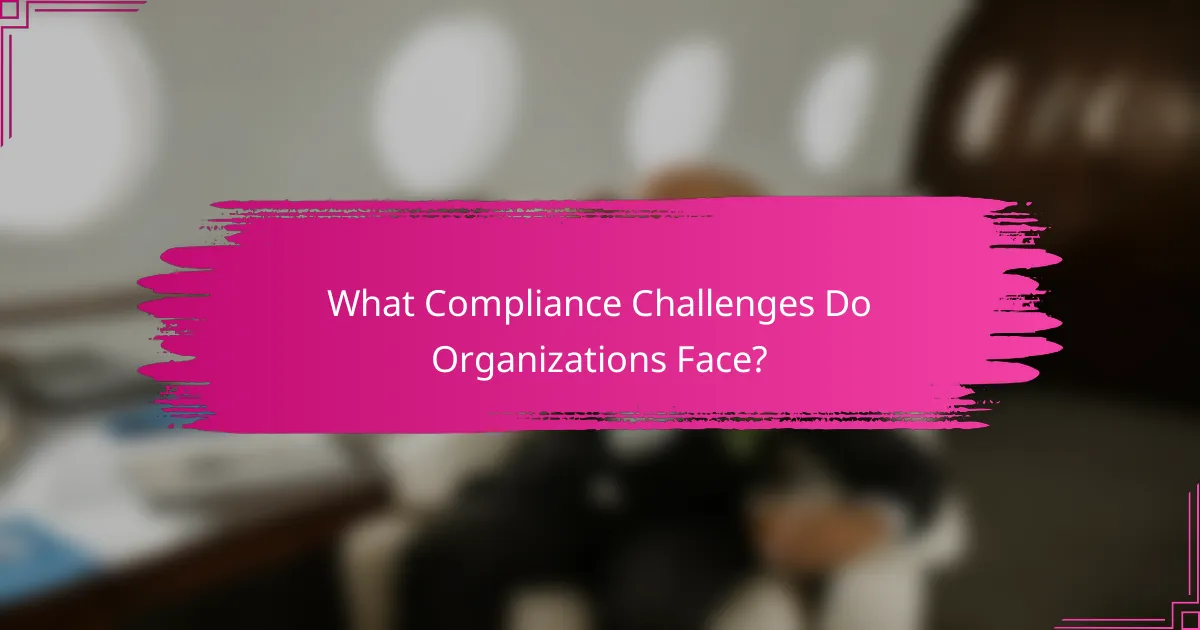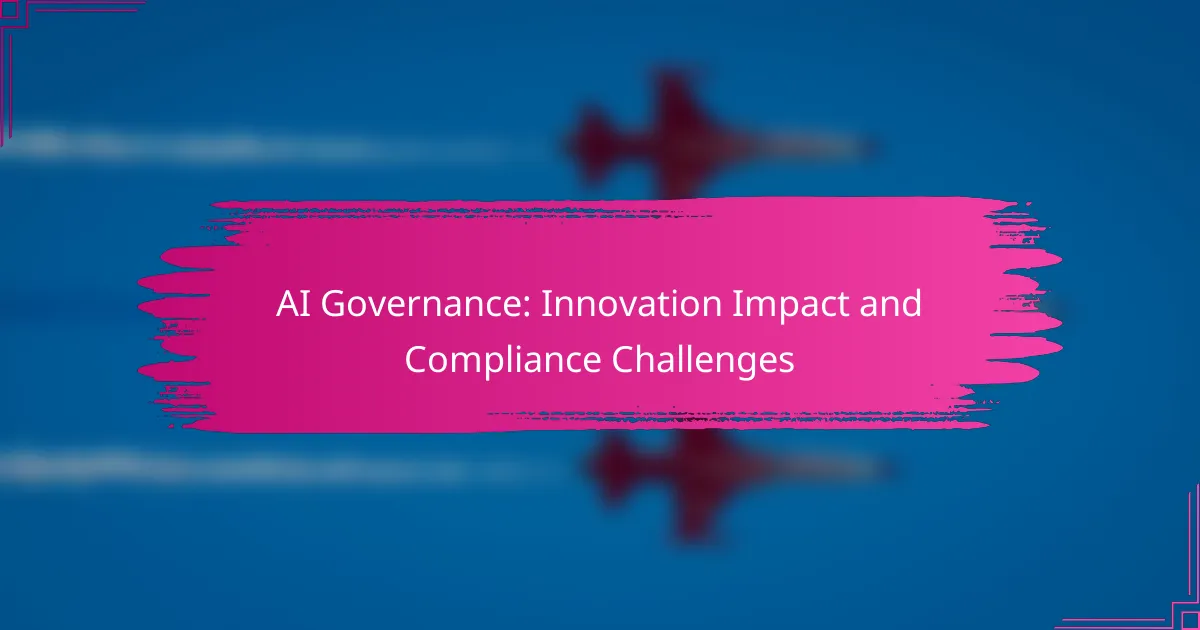AI governance plays a crucial role in balancing innovation with compliance challenges, as organizations strive to implement cutting-edge technologies while adhering to ethical standards and regulatory requirements. Effective governance solutions, including risk management strategies and transparency mechanisms, are essential for navigating the complexities of AI implementation. As AI continues to evolve, organizations must adapt their frameworks to address emerging compliance issues and ethical considerations, ensuring responsible use of technology.

You can explore more about AI governance on our homepage.
What Are the Key AI Governance Solutions?
Key AI governance solutions include frameworks, compliance tools, risk management strategies, stakeholder engagement practices, and transparency mechanisms. These solutions help organizations navigate the complexities of AI innovation while ensuring ethical standards and regulatory compliance.
Frameworks for Ethical AI
Frameworks for ethical AI provide guidelines for developing and deploying AI systems responsibly. They often include principles such as fairness, accountability, and transparency, which organizations should integrate into their AI processes.
Examples of widely recognized frameworks include the OECD Principles on AI and the EU’s Ethics Guidelines for Trustworthy AI. Adopting these frameworks can help organizations align their practices with societal values and legal requirements.
Regulatory Compliance Tools
Regulatory compliance tools assist organizations in adhering to laws and regulations governing AI use. These tools can automate compliance checks, monitor AI systems for adherence to legal standards, and generate reports for regulatory bodies.
Common tools include data protection impact assessments (DPIAs) and compliance management software. Organizations should regularly update these tools to reflect changes in regulations, such as the General Data Protection Regulation (GDPR) in Europe.
Risk Management Strategies
Risk management strategies for AI involve identifying, assessing, and mitigating potential risks associated with AI technologies. This includes evaluating biases in algorithms, data privacy concerns, and the impact of AI decisions on stakeholders.
Organizations can implement risk assessment frameworks, conduct regular audits, and establish incident response plans. A proactive approach to risk management can prevent costly errors and enhance trust in AI systems.
Stakeholder Engagement Practices
Engaging stakeholders is crucial for effective AI governance. This involves communicating with affected parties, including employees, customers, and regulators, to gather feedback and address concerns regarding AI implementations.
Regular consultations, workshops, and public forums can facilitate meaningful dialogue. Organizations should prioritize transparency and inclusivity to build trust and ensure that diverse perspectives are considered in AI development.
Transparency Mechanisms
Transparency mechanisms enhance the accountability of AI systems by making their operations understandable to users and stakeholders. This can include clear documentation of algorithms, data sources, and decision-making processes.
Organizations can adopt practices such as explainable AI (XAI) techniques, which aim to provide insights into how AI models arrive at their conclusions. Implementing these mechanisms can help demystify AI and foster greater public confidence in its use.

How Does AI Innovation Impact Governance?
AI innovation significantly influences governance by reshaping how organizations manage data, make decisions, and address ethical considerations. As AI technologies evolve, they introduce new frameworks for compliance and oversight that must be navigated carefully.
Increased Data Utilization
AI innovation leads to enhanced data utilization, allowing organizations to analyze vast amounts of information quickly. This capability can improve operational efficiency and drive better outcomes across various sectors, including healthcare, finance, and logistics.
However, increased data usage raises compliance challenges, particularly concerning data privacy regulations like GDPR in Europe or CCPA in California. Organizations must ensure that their data practices align with these regulations to avoid hefty fines.
Enhanced Decision-Making Processes
AI tools can streamline decision-making processes by providing insights based on data analysis, which can lead to more informed and timely decisions. For example, predictive analytics can help businesses forecast trends and adjust strategies accordingly.
Despite these advantages, reliance on AI for decision-making can introduce biases if the underlying data is flawed. Organizations should regularly audit their AI systems to ensure fairness and accuracy in outcomes.
Emergence of New Ethical Dilemmas
The integration of AI into governance raises ethical dilemmas, such as accountability for AI-driven decisions and the potential for job displacement. Organizations must grapple with these issues as they implement AI solutions.
To address these ethical challenges, companies should establish clear guidelines and frameworks that promote responsible AI use. Engaging stakeholders in discussions about AI ethics can also foster transparency and trust within the organization.

What Compliance Challenges Do Organizations Face?
Organizations encounter several compliance challenges when implementing AI technologies, primarily related to regulatory frameworks, ethical considerations, and operational practices. These challenges can hinder innovation while ensuring adherence to legal and ethical standards.
Data Privacy Regulations
Data privacy regulations, such as the General Data Protection Regulation (GDPR) in Europe and the California Consumer Privacy Act (CCPA) in the United States, impose strict requirements on how organizations collect, store, and process personal data. Companies must ensure transparency, obtain consent, and provide users with rights over their data, which can complicate AI model training and deployment.
To navigate these regulations effectively, organizations should conduct regular audits of their data practices, implement robust data governance frameworks, and invest in privacy-enhancing technologies. Failing to comply can result in hefty fines, often reaching millions of dollars.
Algorithmic Accountability
Algorithmic accountability refers to the responsibility organizations have to ensure that their AI systems operate fairly and transparently. This includes documenting decision-making processes and being able to explain how algorithms arrive at specific outcomes. Stakeholders increasingly demand accountability to prevent misuse and discrimination.
Organizations can enhance accountability by adopting best practices such as maintaining detailed logs of algorithmic decisions, conducting impact assessments, and engaging with third-party audits. This proactive approach helps build trust with users and regulators alike.
Bias Mitigation Requirements
Bias mitigation is crucial for organizations deploying AI, as biased algorithms can lead to unfair treatment of individuals based on race, gender, or other characteristics. Regulatory bodies are beginning to emphasize the need for bias assessments and corrective measures to ensure equitable outcomes.
To address bias, organizations should implement diverse training datasets, regularly test algorithms for fairness, and establish clear guidelines for bias detection and correction. Continuous monitoring and adjustment are essential to maintain compliance and uphold ethical standards in AI applications.

What Frameworks Support AI Governance?
Several frameworks support AI governance by establishing principles and regulations that guide the ethical and responsible use of AI technologies. These frameworks help organizations navigate compliance challenges while fostering innovation in AI development.
You can explore various AI governance models that enhance ethical practices.
OECD AI Principles
The OECD AI Principles provide a set of guidelines aimed at promoting the responsible development and use of AI. These principles emphasize the importance of transparency, accountability, and fairness in AI systems.
Organizations can implement these principles by ensuring that AI systems are designed to be explainable and that their decision-making processes are auditable. For instance, companies might conduct regular assessments to evaluate the impact of their AI systems on various stakeholders.
EU AI Act Overview
The EU AI Act is a regulatory framework that categorizes AI systems based on their risk levels, imposing stricter requirements on higher-risk applications. This act aims to ensure that AI technologies are safe and respect fundamental rights.
Under the EU AI Act, organizations must comply with specific obligations, such as conducting risk assessments and providing clear documentation for high-risk AI systems. For example, a company deploying AI in healthcare must demonstrate that its system meets safety standards and protects patient data.

How to Choose the Right AI Governance Model?
Choosing the right AI governance model involves understanding your organization’s specific needs, regulatory environment, and ethical considerations. A well-defined model ensures compliance while fostering innovation and responsible AI use.
Assessing Organizational Needs
Start by evaluating the unique requirements of your organization, including industry regulations and the scale of AI deployment. Consider factors such as data sensitivity, potential risks, and the impact of AI on business operations.
Engage stakeholders from various departments to gather insights on their expectations and concerns regarding AI governance. This collaborative approach helps identify gaps and ensures that the governance model aligns with organizational goals.
Utilize a checklist to assess needs: identify key stakeholders, outline regulatory requirements, evaluate current AI capabilities, and determine risk tolerance. This structured assessment will guide you in selecting a governance model that supports both compliance and innovation.
